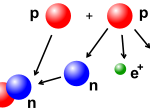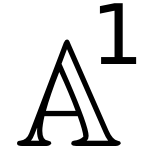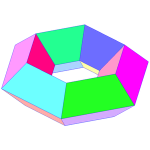Model categories
Monday, November 12th, 2012 | Author: Konrad Voelkel

This is supposed to be a short intuitive introduction to model categories.
Suppose you have a category  and some class of morphisms
and some class of morphisms  which behave somewhat like isomorphisms (for example: Chain complexes and Quasi-isomorphisms, or topological spaces and homotopy equivalences, or simplicial sets and weak homotopy equivalences ...). We will call this class "weak equivalences". Then you can look at the localized category
which behave somewhat like isomorphisms (for example: Chain complexes and Quasi-isomorphisms, or topological spaces and homotopy equivalences, or simplicial sets and weak homotopy equivalences ...). We will call this class "weak equivalences". Then you can look at the localized category ![[W^{-1}]\mathcal{C}](https://www.konradvoelkel.com/wp-content/plugins/latex/cache/tex_ae2aadcffa93ebb0d0ee28d4f2ff9c57.gif) , where the morphisms in
, where the morphisms in  are made invertible. If you're lucky, not all objects are isomorphic to each other, and if you're really lucky, you can compute something.
are made invertible. If you're lucky, not all objects are isomorphic to each other, and if you're really lucky, you can compute something.
But, as it turns out, usually you don't work with the localized category abstractly, but by some explicit construction of some special case (say, Verdier localization of triangulated categories in the homological setting or explicit homotopies in the topological setting).
Model categories (and its cousins, weak factorization systems, categories of (co)fibrant objects, homotopical categories, etc.) provide a framework to compute stuff in ![[W^{-1}]\mathcal{C}](https://www.konradvoelkel.com/wp-content/plugins/latex/cache/tex_ae2aadcffa93ebb0d0ee28d4f2ff9c57.gif) .
.
[UPDATE 2013-03-06] I gave a 30-Minute talk about model categories, with very little content. [/UPDATE]
Category: English, Mathematics | 2 Comments












